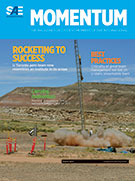Magazine

Aerospace & Defense Technology: October 2015
2015-10-01
Countering cybersecurity threats against unmanned vehicle systems Cranfield University researchers have developed a monitoring system whose purpose is to monitor mission profile implementation at both high level mission execution and at lower level software code operation to tackle specific threats of malicious code and possible spurious commands received over a vehicle's data links.







